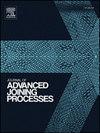The effect of laser welding parameters on mechanical properties and microstructure evolution of multi-layered 6061 aluminum alloy
IF 4
Q2 MATERIALS SCIENCE, MULTIDISCIPLINARY
引用次数: 0
Abstract
In this study, the key findings of evaluating laser beam welding parameters on the multi-layered structure of 6061 aluminum alloys fabricating by accumulative roll bonding process are reported, considering fostering mechanical properties concerning the influence of filler metal and welding speed on the weld bead quality by taking into account reducing welding defects. Welding defects, including porosity and hot cracks, formed due to the evaporation of low-molten elements such as Mg, which can be reduced by adding filler metal to compensate for the vaporized Mg content. The optimal tensile strength is related to the laser beam welding using filler metal at the speed of 40 mm/s. Work-hardening behavior leading to fatigue life improvement is associated with the rearrangement and multiplication of dislocations in all samples. The related mechanisms responsible for the microstructural evolution during the cyclic deformation process were described by transmission electron microscopy observation. The fracture surface analyzed by scanning electron microscopy indicated that delamination contributing to local necking is the leading cause of fracture in accumulative roll-bonded 6061 aluminum alloy. However, the fracture morphology of laser-welded samples displays a heterogeneous distribution of equiaxed dimples along with negligible serpentine sliding, indicating a ductile fracture mode.
激光焊接参数对多层6061铝合金力学性能及组织演变的影响
本文报道了采用累积滚焊工艺制备6061铝合金多层结构的激光焊接参数评价的关键结果,在考虑减少焊接缺陷的同时,考虑了填料金属和焊接速度对焊缝质量影响的力学性能培养。焊接缺陷,包括气孔和热裂纹,是由于低熔融元素如Mg的蒸发而形成的,可以通过添加填充金属来补偿蒸发的Mg含量来减少。最佳抗拉强度与填充金属激光束焊接速度为40mm /s有关。导致疲劳寿命提高的加工硬化行为与所有样品中位错的重排和倍增有关。通过透射电镜观察,描述了循环变形过程中微观组织演变的相关机制。通过扫描电镜对6061铝合金的断口形貌进行了分析,结果表明:层析导致的局部颈缩是导致累积滚焊6061铝合金断裂的主要原因。然而,激光焊接试样的断口形貌表现为均匀分布的等轴韧窝和可忽略不计的蛇形滑动,表明其为韧性断裂模式。
本文章由计算机程序翻译,如有差异,请以英文原文为准。
求助全文
约1分钟内获得全文
求助全文

 求助内容:
求助内容: 应助结果提醒方式:
应助结果提醒方式:


